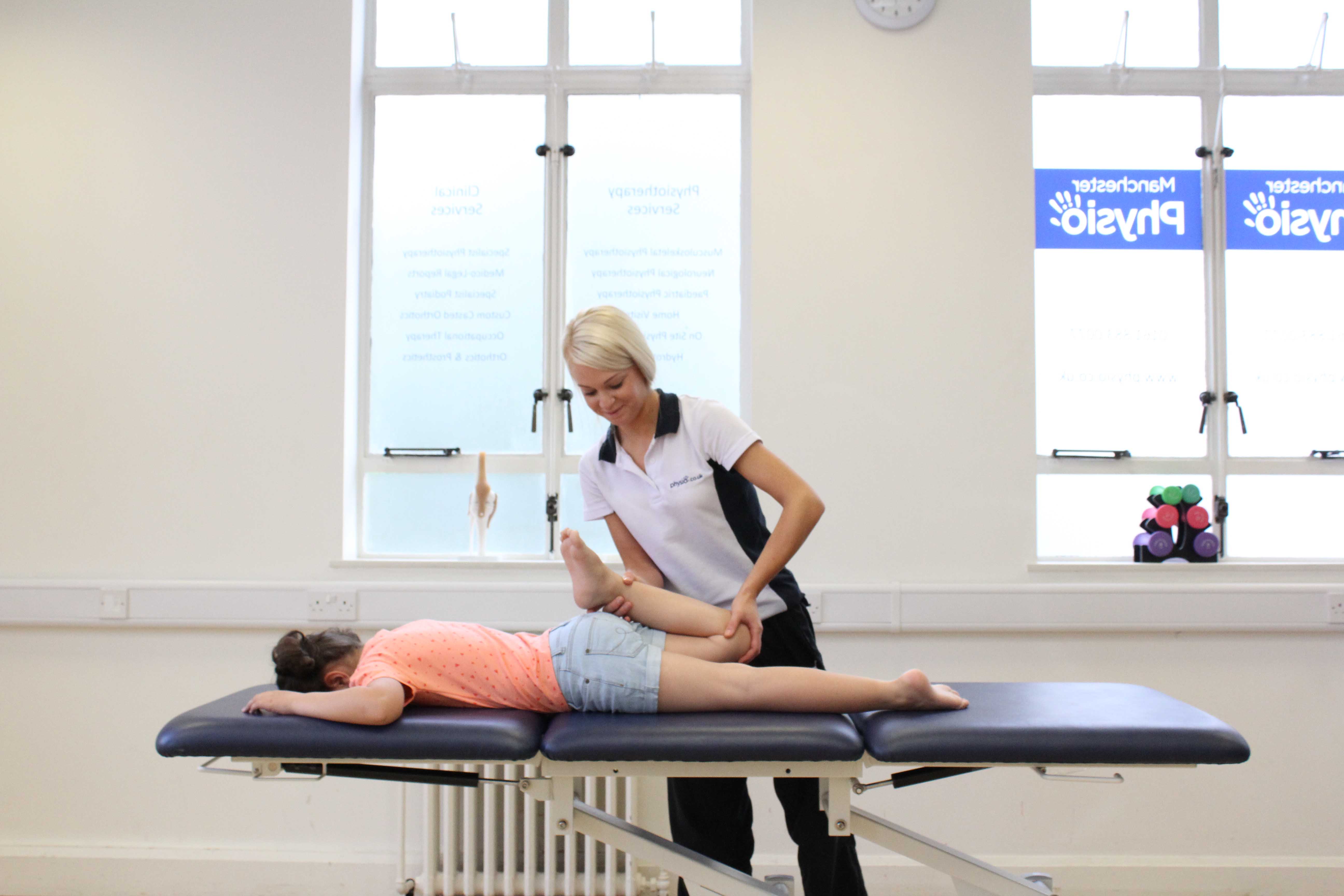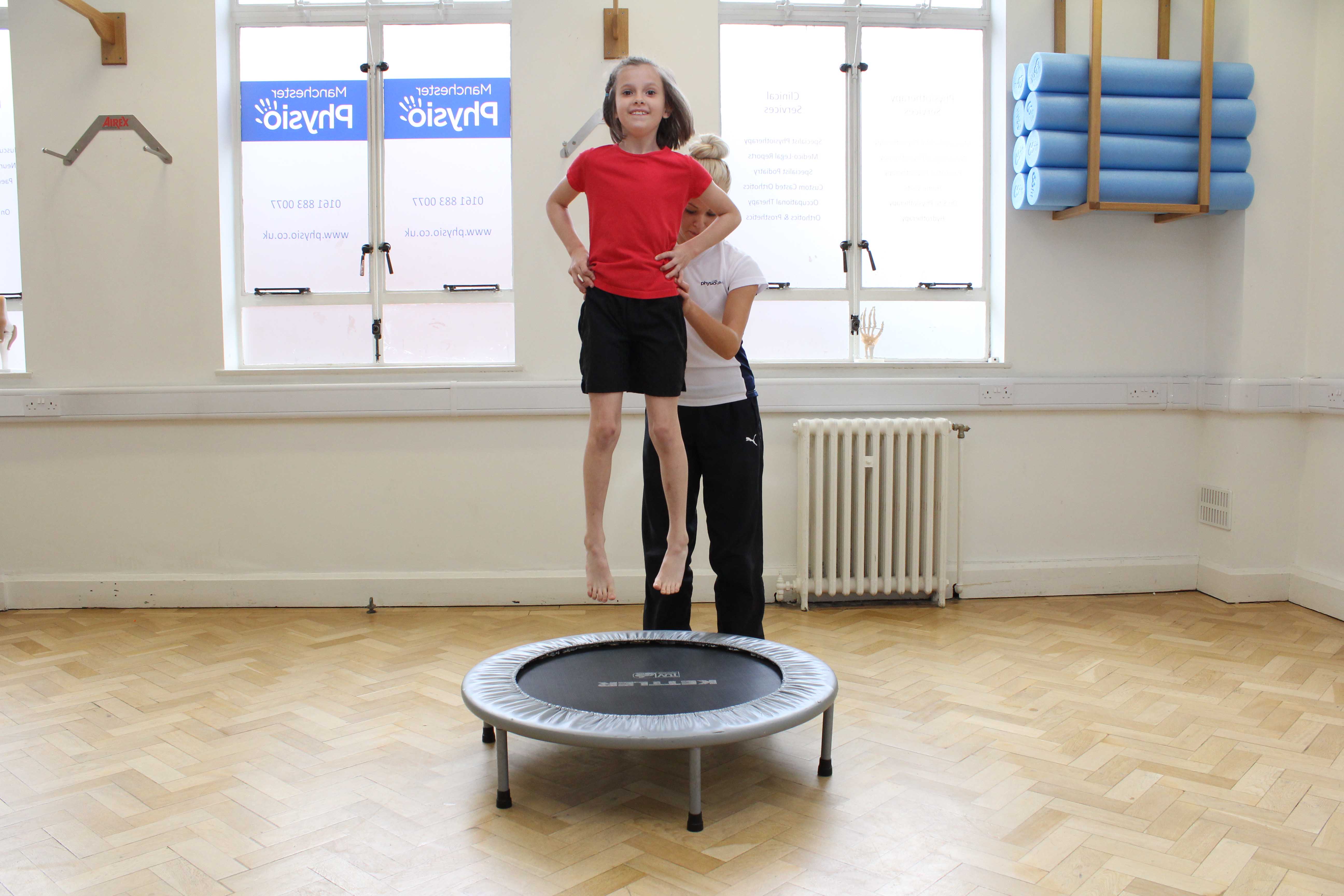What is Cerebral Palsy?
Cerebral palsy is the most common neurodevelopmental disorder caused by damage to the brain before, during or after birth.
Cerebral Palsy in toddlers may affect your childs movement, posture and cognitive function and lead to difficulties achieving developmental milestone such as sitting, crawling and walking at the expected age.
 Above: Toning and strengthening exercises assisted by specilaist paediatric physiotherapist
Above: Toning and strengthening exercises assisted by specilaist paediatric physiotherapistWhat causes Cerebral Palsy?
It is unknown what causes Cerebral Palsy but certain factors such as abnormal development, genetic or chromosome abnormalities, trauma and infections during development can cause Cerebral Palsy.
Complications during birth such as asphyxia and hypoxia (lack of oxygen) and problems into childhood such a head injury and meningitus can also cause Cerebral Palsy.
 Above: strengthening and mobility exercises led by a paediatric physiotherapist
Above: strengthening and mobility exercises led by a paediatric physiotherapistWhat are the symptoms of Cerebral Palsy?
Every toddler with cerebral palsy is different. Symptoms of Cerebral Palsy depend on the type, area of brain affected and severity of the condition.
The are several different types of cerebral palsy which are classified in terms of the part of the body involved (for example, hemiplegia, diplegia, quadraplegia) and the clinical presentation of involuntary movement and tone (e.g. spastic, ataxic, athetoid).
The three main types of cerebral palsy are:
- Spastic cerebral palsy – symptoms include increased muscle tone that affects range of movement and the flexibility of the joints.
- Athetoid cerebral palsy – symptoms include slow, writhing movements usually affecting the hands, feet, arms, or legs causing problems with eating and speaking and difficulty picking up objects
- Ataxic cerebral palsy – symptoms include low muscle tone and reduced co-ordination of movement affecting all four limbs and the trunk leading to reduced balance and unsteady gait.
Diagnosis of Cerebral Palsy
A diagnosis of Cerebral Palsy can be made by a physiotherapist or pediatrician. They will ask you about your child's history and current physical and cognitive development and conduct a thorough physical assessment to confirm a diagnosis.
Physiotherapy for children with cerebral palsy
Your toddler will benefit from specialist paediatric physiotherapy treatment.
Our paediatric physiotherapistsat Physio.co.uk are experienced at assessing and treating toddlers with cerebral palsy.
At Physio.co.uk, your dedicated physiotherapist will facilitate you childs physical development so that they reach their milestones with confidence and success, e.g. rolling, crawling and walking.
Physiotherapy should commence as soon as possible to progress your childs development and enhance independence and quality of life.
Physiotherapy treatment at Physio.co.uk will depend on the severity of your childs condition, their current symptoms and stage of development but may involve:
- Using games and toys to improve gross motor skills such as sitting, standing and walking
- Exercises to improve muscle strength and balance.
- Stretching exercises to lengthen tight tissue,normalise tone and improve range of movement.
- Mirror imaging to increase your child’s awareness of where their limbs are in space at rest and during movement (proprioception).
- Activities to correct positioning and to gain better head and trunk control.
- Advice about supportive devices such as using a wheelchair, orthotic devices or other adaptive equipment.
- Constraint movement therapy (CIMT) to improve hand and arm function
- Hydrotherapy treatment to stretch and strengthen muscles and maximise function
At Physio.co.uk we also work closely with occupational therapists who can provide adaptations and equipment for your child if necessary.
For more information on physiotherapy for cerebral palsy, or to book an appointment please call 0161 883 007, or book online today!

 0330 088 7800
0330 088 7800


































